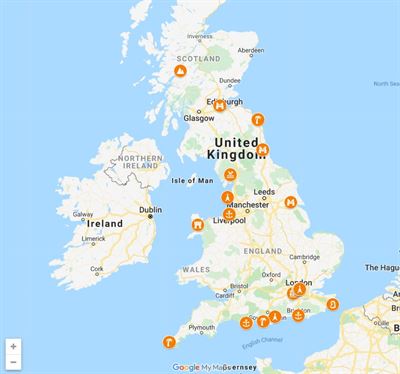21 British Landmarks Threatened by Rising Sea Levels

GreenMatch conducted a study revealing that 21 of Britain’s most cherished landmarks are at risk of being submerged. Landmarks across the UK, such as the London Eye and Hampton Court Palace, are affected.
Rising Sea Levels Is Affecting the UK’s Landmarks
About 90% of heat from human-emitted greenhouse emissions are already absorbed through the oceans, resulting in oceans warming up at a higher pace. These warmer temperatures are leading to rising sea levels. Governments need to act fast in order to slow down this process.
Overall global temperatures should be kept below 2°C above pre-industrial levels and hold the temperature increase up to 1.5°C, as the Paris Agreement suggests. The Met Office warns that if authorities cannot achieve this goal, the path we are currently on may lead to an increase greater than 4°C. The rising sea levels will put some of the UK’s historical and cultural landmarks in danger.
Which Landmarks Are At High Risk?
Using data published by Climate Central, GreenMatch found that landmarks located in London and the South East of England are at highest risk from rising sea levels, and will be affected by 2050 already. These landmarks include the captivating London Eye, Hampton Court Palace, Brighton Palace Pier, and the Needles on the Isle of Wight.
The Blackpool Tower in the North West of England, recognised as the tallest construction in the British Empire, is not in danger in 2050. In 2100, however, this landmark will be at high risk of being submerged.
In North West England, Windermere Lake is also threatened by rising sea levels already in 2050 - although not severe - and even more so by 2100.
Caernarfon Castle in Wales, which is listed as a World Heritage Site, will also be affected by rising sea levels. The sea level rise is not going to have a damaging impact on the landmark in 2050. In 2100 however, the castle will be exposed to severe danger.
Furthermore, coastal sites are likely to suffer bigger damages associated with the future increase in sea levels. With outgoing coastal erosion and the shift in the global climate, the Jurassic Coast on the English Channel Coast offers a beautiful scenery that will likely be changed forever. This means the UK may lose one of its UNESCO World Heritage Sites.
If you want to read more about how this study was conducted, click here.
Ramona Gosheva
Communications Assistant at GreenMatch
Email: rg@greenmatch.co.uk
Phone: 020 3608 0133


